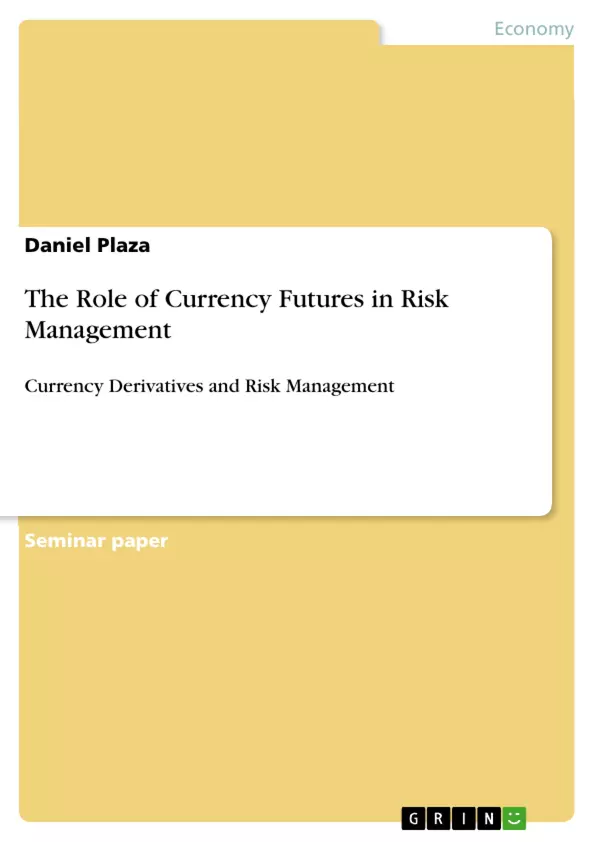The purpose of this report is to discuss the role of currency futures in risk management as well as their main advantages and drawbacks. The report will analyse the global rate of utilization of currency futures by comparison with other main currency derivatives and the geographic differences in their usage. Possible explanations for the preference for certain currency derivatives in risk management will be given.
The usefulness of currency futures rate as an estimator of future spot rate will be discussed by reviewing and summarizing the existing literature on this subject.
Practical applications of currency futures also will be covered in this report.
Inhaltsverzeichnis (Table of Contents)
- 1. Introduction
- 2. Literature Review
- 2.1 The Use of Currency Futures
- 2.2 Currency Futures Rate as Estimator of Spot Exchange Rate
- 3. Application
- 3.1 Trading on Currency Futures Exchanges
- 3.2 Hedging Foreign Exchange Risk Assuming Perfect Correlation between Spot and Futures Prices
- 3.3 Hedging Foreign Exchange Risk Assuming Basis Risk
- 3.4 Estimation of the Hedge Ratio
- 4. Conclusion
- 5. References
Zielsetzung und Themenschwerpunkte (Objectives and Key Themes)
This report aims to explore the role of currency futures in managing foreign exchange risk, highlighting their advantages and drawbacks. It will analyze global usage patterns of currency futures compared to other currency derivatives, exploring geographic variations in their adoption. The report will also discuss the factors influencing the preference for specific currency derivatives in risk management practices.
- The role of currency futures in risk management
- Comparison of currency futures with other currency derivatives
- Factors influencing the preference for certain currency derivatives
- Currency futures as an estimator of future spot exchange rates
- Practical applications of currency futures in risk management
Zusammenfassung der Kapitel (Chapter Summaries)
The introduction outlines the objective of foreign exchange risk management, emphasizing the importance of cash flow certainty and minimizing earnings fluctuations. It categorizes foreign exchange risk into three types: transaction, translation, and economic exposure. The report highlights the primary focus on transaction risk among firms.
The literature review examines the use of currency futures, particularly their role as an estimator of future spot exchange rates. The chapter provides a summary of existing research on this topic.
The application section focuses on trading on currency futures exchanges. It covers hedging strategies for foreign exchange risk, considering both perfect correlation and basis risk between spot and futures prices. The chapter also delves into the estimation of hedge ratios.
Schlüsselwörter (Keywords)
Key concepts in this report include currency futures, foreign exchange risk management, hedging strategies, spot exchange rates, basis risk, hedge ratios, and global usage patterns of currency derivatives. The report explores the role of currency futures as an external technique for managing foreign exchange risk and analyzes their advantages and disadvantages in comparison to other currency derivatives.
- Arbeit zitieren
- Daniel Plaza (Autor:in), 2011, The Role of Currency Futures in Risk Management, München, GRIN Verlag, https://www.grin.com/document/173144



